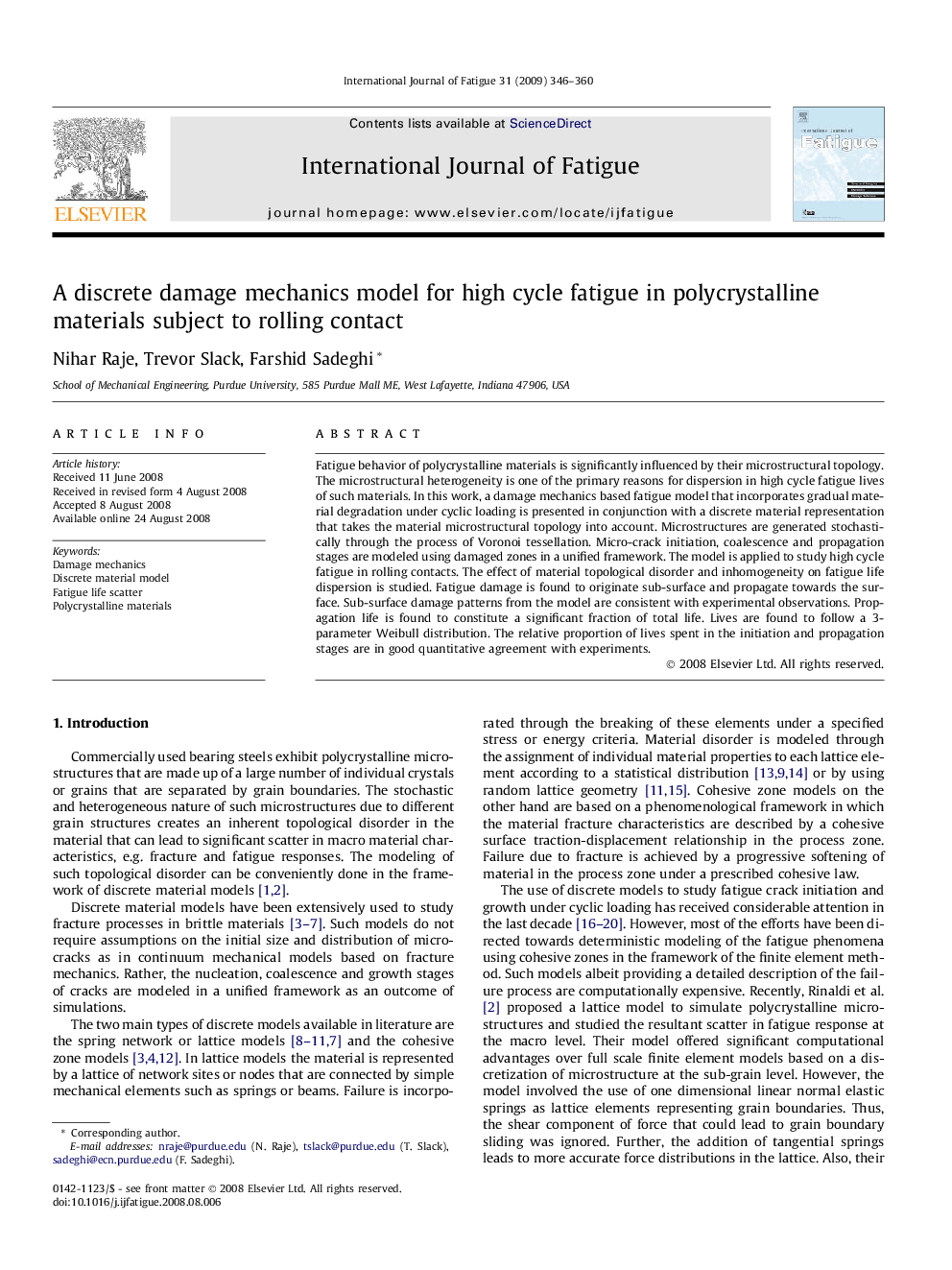| Article ID | Journal | Published Year | Pages | File Type |
|---|---|---|---|---|
| 777865 | International Journal of Fatigue | 2009 | 15 Pages |
Fatigue behavior of polycrystalline materials is significantly influenced by their microstructural topology. The microstructural heterogeneity is one of the primary reasons for dispersion in high cycle fatigue lives of such materials. In this work, a damage mechanics based fatigue model that incorporates gradual material degradation under cyclic loading is presented in conjunction with a discrete material representation that takes the material microstructural topology into account. Microstructures are generated stochastically through the process of Voronoi tessellation. Micro-crack initiation, coalescence and propagation stages are modeled using damaged zones in a unified framework. The model is applied to study high cycle fatigue in rolling contacts. The effect of material topological disorder and inhomogeneity on fatigue life dispersion is studied. Fatigue damage is found to originate sub-surface and propagate towards the surface. Sub-surface damage patterns from the model are consistent with experimental observations. Propagation life is found to constitute a significant fraction of total life. Lives are found to follow a 3-parameter Weibull distribution. The relative proportion of lives spent in the initiation and propagation stages are in good quantitative agreement with experiments.
